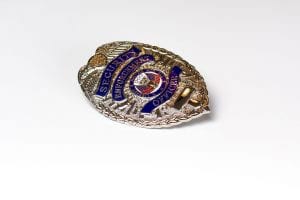According to a recent article, a child with biliary atresia was able to celebrate her first birthday following her liver transplant.
Biliary Atresia
Biliary atresia is a condition occurring in infants in which the bile ducts both outside and inside the liver are scarred, blocked, or destroyed. The bile ducts are tubes that carry bile (fluid that aids in digestion) to the gallbladder. When the bile ducts are blocked, bile builds up in the liver and then damages it. This can lead to other health problems, including scarring, loss of liver tissue and function, and cirrhosis. Biliary atresia occurs in about 1 in 10,000 to 15,000 births in the U.S. and is slightly more likely to affect females than males. Babies with this condition may appear normal at birth, but the first symptoms often start to appear by the second or third week of life.
Symptoms:
- Yellow skin and whites of the eyes (jaundice) that appears within the first 2 to 6 weeks of life
- Pale yellow, white, or gray stool
- Dark urine
- Swollen stomach
- Abnormally enlarged liver
- By age 6 to 10 weeks: irritability, poor weight gain, increase in blood pressure
- Scarring of the liver
- Liver failure
- Less common symptoms: intense itching, heart malformations, kidney malformations, absence of the spleen, more than one spleen, and/or other anatomical abnormalities
Audrey Huss’ Story
Last year, the parents of Audrey Huss, Travis and Kendra Huss, learned that their daughter had a rare liver disease called biliary atresia. Her condition meant that she would need a liver transplant immediately, but with how young she was, the requirements were extremely specific – making it hard to find a match.
In the meantime, Audrey Huss underwent a bandaid procedure in an effort to delay her need for a liver transplant. However, in October of 2021 it became obvious she would need the transplant as soon as possible.
The donor requirement that caused the most issues was the donor needed to weigh between 75 to 100 pounds while also being between the ages of 18 and 45. This disqualified a significant number of possible donors, including several family members. It reached the point where the wight requirement was even increased 10 pounds in the hopes of finding a donor sooner.
Finding a Match
In December of 2021, the Huss family finally received the news that their daughter had a donor match. It came from Audrey’s aunt’s coworker, Brenda Burt. Initially, Burt had been overlooked since she did not meet the initial weight requirement. After the weight requirement was increased, Brenda Burt immediately reapplied to be a donor thus leading her to become a match.
The surgery, which occurred only a day after Burt was found to be a match, was an extensive surgery that lasted for 8 hours. Even after the surgery, Audrey Huss endured two other procedures before her transplant was officially declared a success.
The new year brought new hope for the family who were allowed to bring their daughter home. Audrey Huss has been living a fairly normal childhood and has been meeting all of her milestones. Doctor’s have announced that her prognosis is good, and the only issue she will have to deal with for the remainder of her life is taking anti-rejection medication.
Celebrating Another Milestone
On her first birthday, Audrey Huss was able to meet the woman who saved her life only a few months earlier. Burt has become an honorary Huss family member, and Travid and Kendra Huss plan on keeping her as a part of their daughter’s life forever.








